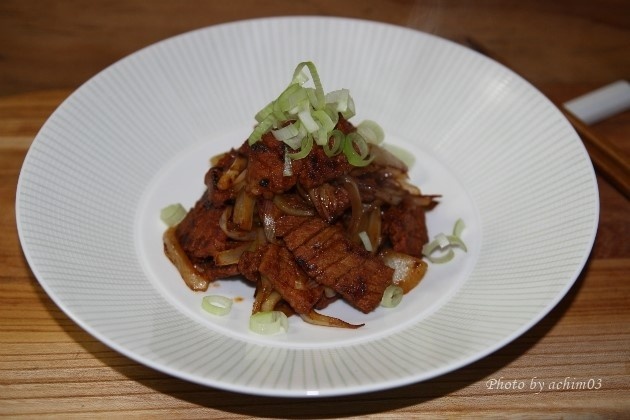Spicy & Sweet Pork Bulgogi with Gochujang: The Ultimate Home Recipe
Flavorful Pork Bulgogi with Gochujang

Tender pork bathed in a spicy and sweet gochujang sauce, so delicious it’ll make you finish a bowl of rice in no time! My son says it’s even tastier than beef! Let’s make this mouthwatering pork bulgogi together.
Main Ingredients- Pork shoulder or belly 400g
Spicy & Sweet Marinade- Gochujang (Korean chili paste) 2.5 Tbsp
- Fine Gochugaru (Korean chili flakes) 1 Tbsp
- Minced garlic 1/2 Tbsp
- Maesilcheong (Plum extract) 1/2 Tbsp
- Ginger juice 1 tsp (or a pinch of ginger powder)
- Mirin (Rice wine) 1/2 Tbsp
- Sugar 1/2 Tbsp (adjust sweetness to your preference)
- Soy sauce 1 Tbsp
- Pear juice pouch 1 (approx. 100ml)
- Sesame oil 1/2 Tbsp
- Gochujang (Korean chili paste) 2.5 Tbsp
- Fine Gochugaru (Korean chili flakes) 1 Tbsp
- Minced garlic 1/2 Tbsp
- Maesilcheong (Plum extract) 1/2 Tbsp
- Ginger juice 1 tsp (or a pinch of ginger powder)
- Mirin (Rice wine) 1/2 Tbsp
- Sugar 1/2 Tbsp (adjust sweetness to your preference)
- Soy sauce 1 Tbsp
- Pear juice pouch 1 (approx. 100ml)
- Sesame oil 1/2 Tbsp
Cooking Instructions
Step 1
Pat the pork dry with paper towels and slice it into bite-sized pieces. Making thin cuts (scoring) into the meat will help the marinade penetrate better and make the pork more tender. (Tip: For an even deeper flavor, you can score the pork the day before and let it marinate in the refrigerator.)

Step 2
In a bowl, combine all the marinade ingredients: gochujang, fine gochugaru, minced garlic, maesilcheong, ginger juice, mirin, sugar, soy sauce, pear juice, and sesame oil. Mix well until there are no lumps.

Step 3
Add the pre-cut pork to the marinade and mix thoroughly with your hands. Gently massaging the marinade into the meat ensures it’s evenly coated and infused with flavor. (Tip: For best results, let the marinated pork rest in the refrigerator for at least 30 minutes.)

Step 4
Heat a pan over medium heat. Add the marinated pork and stir-fry until it’s about 80% cooked. Make sure to stir occasionally to prevent sticking. Cooking it only to 80% is key, as it will continue to cook with the vegetables later, preventing it from becoming tough.



